



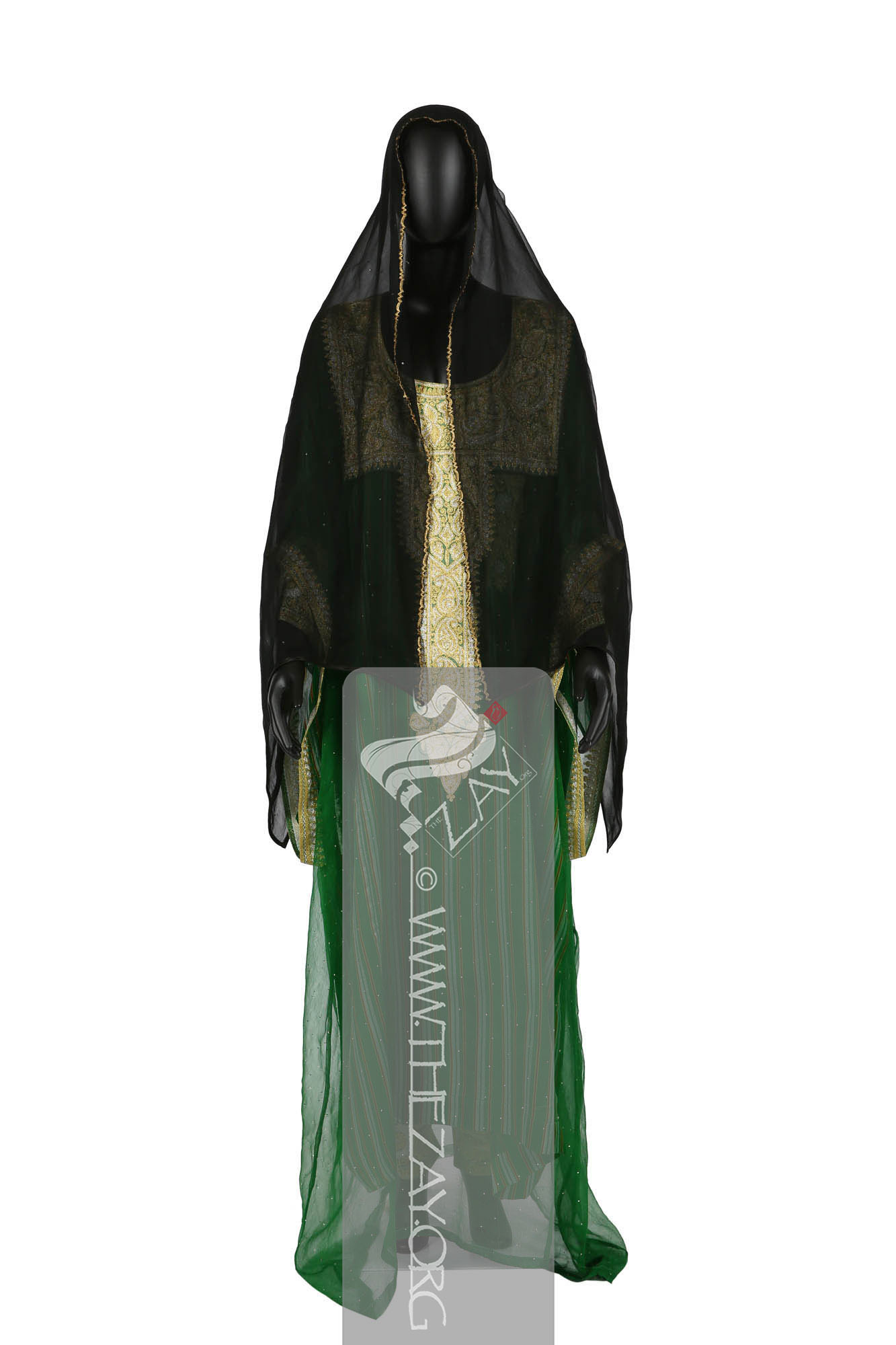
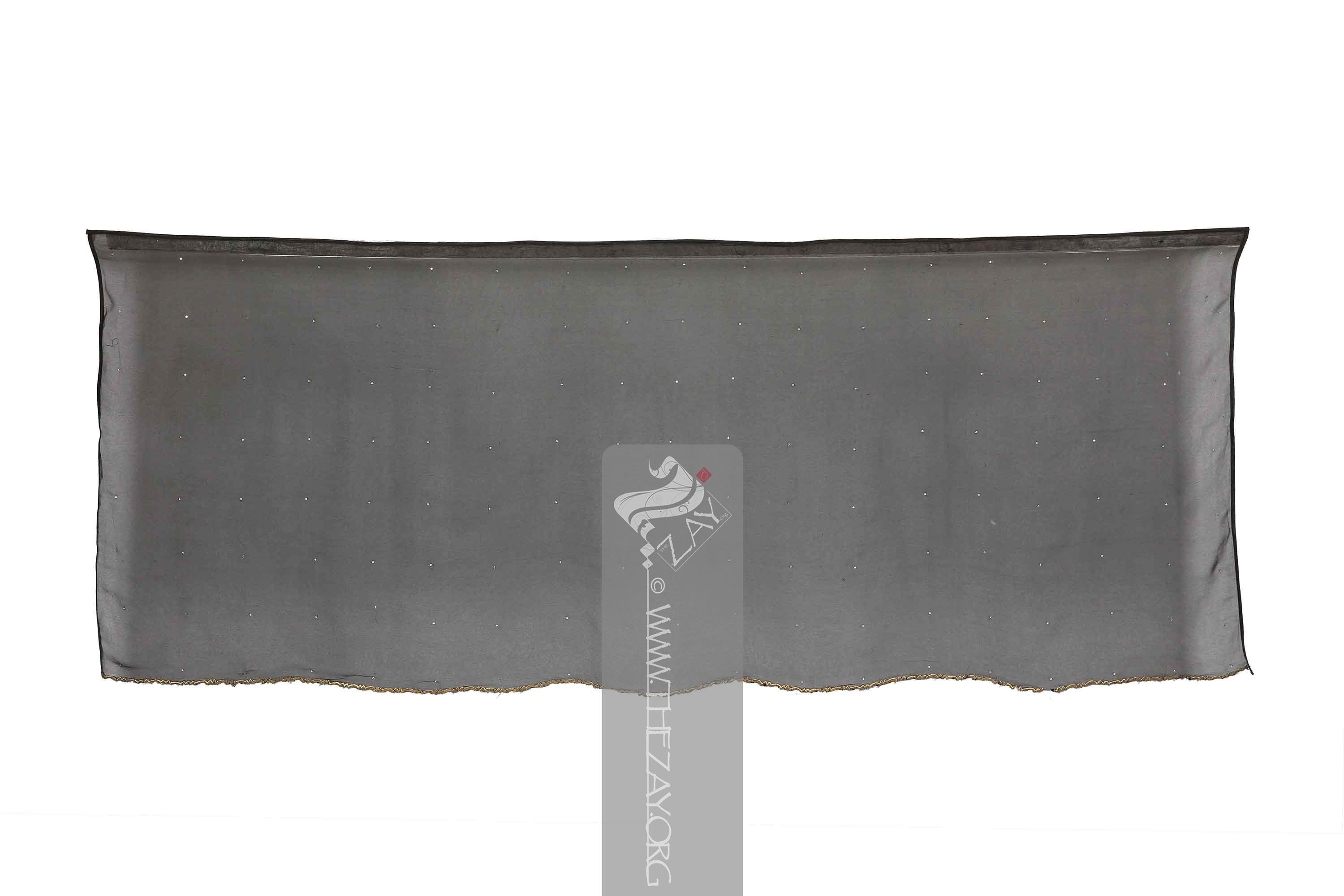
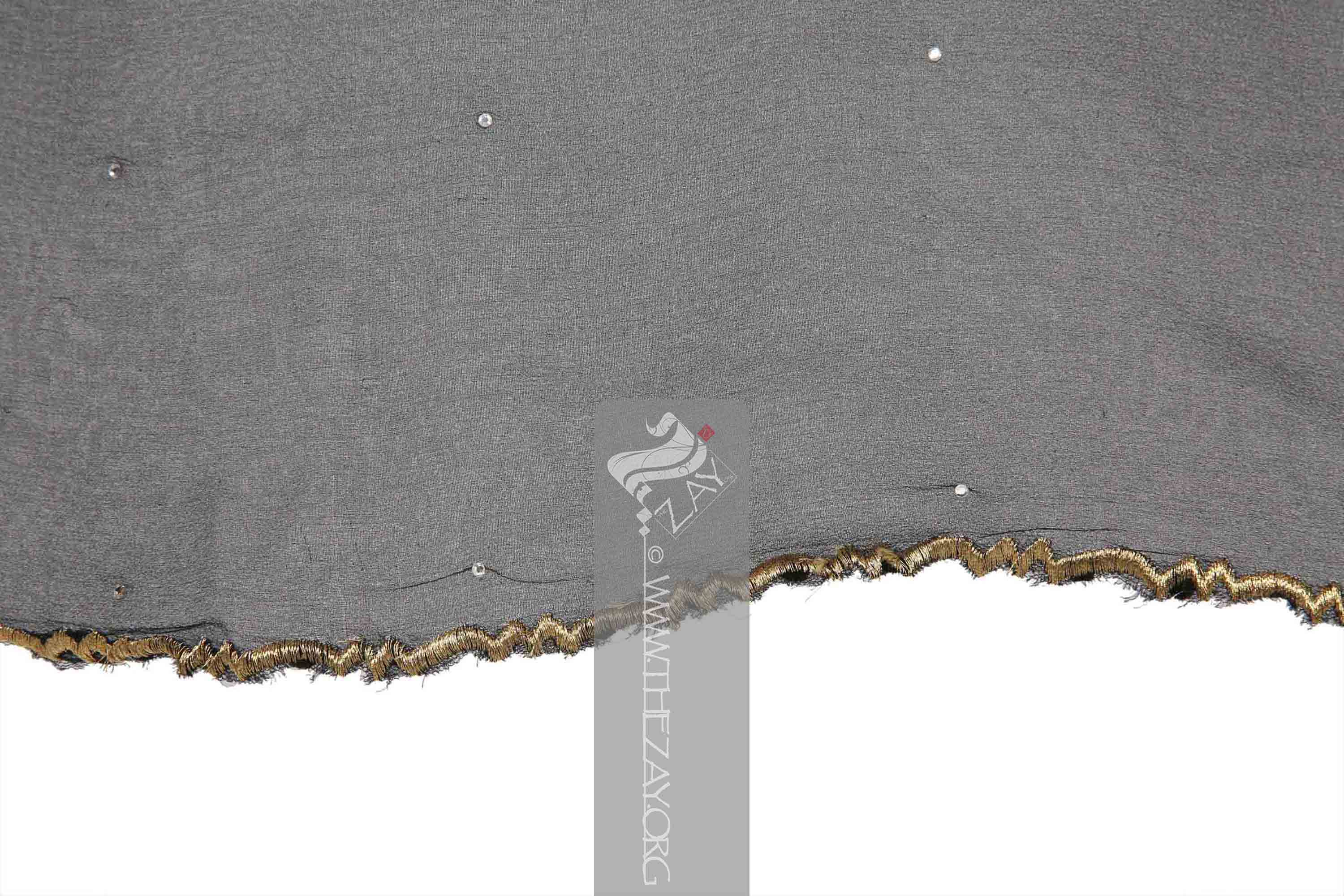
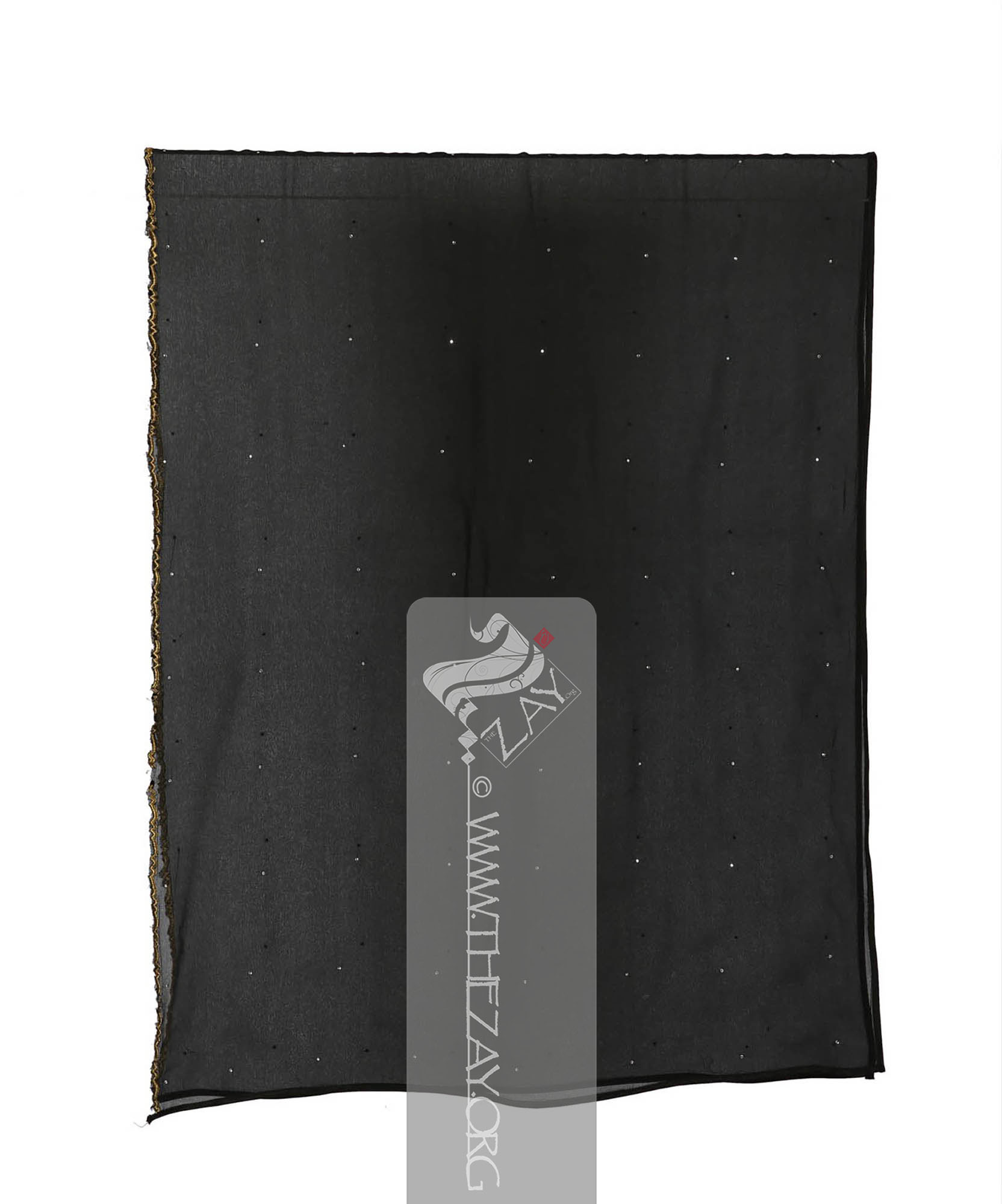
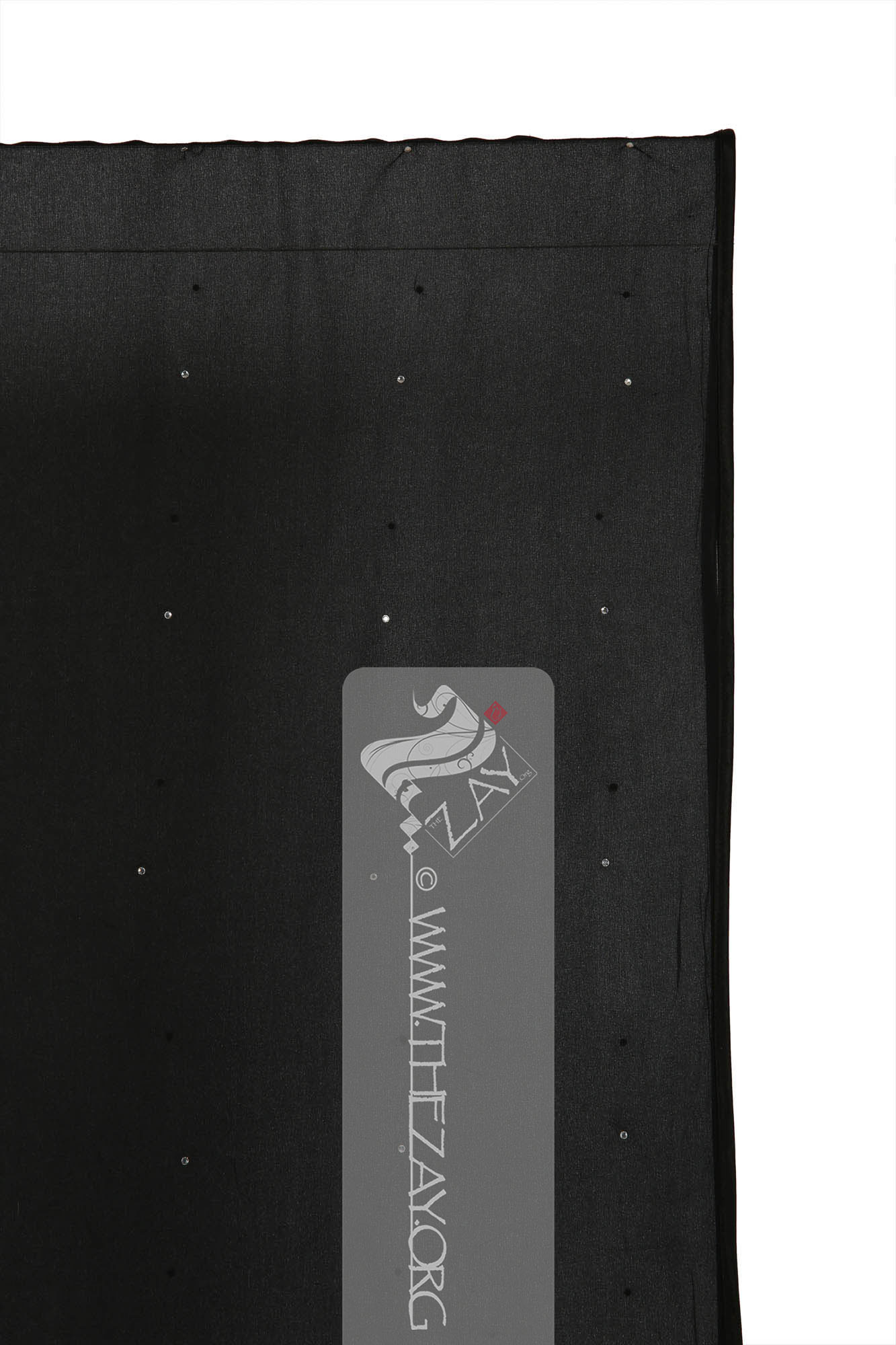
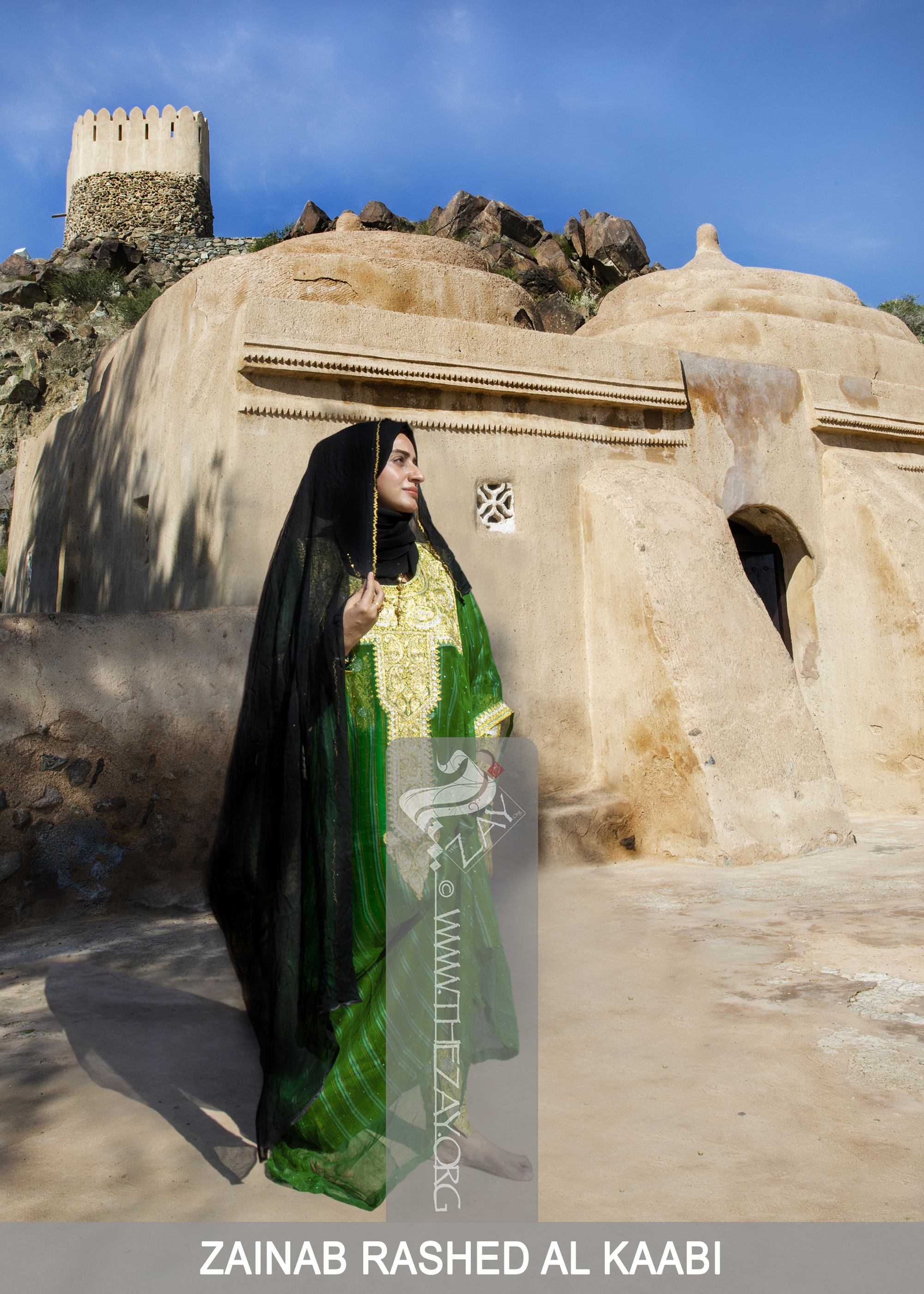
| Local Name | Shaylah zari fsus |
| Object Category | Headwear |
| Gender | Female |
| Date of object | Circa 1988 |
| Place Of orgin | United Arab Emirates |
| Region | Al Ain |
| Object Range | UAE, Qatar, Oman, Bahrain, Kuwait, KSA |
| Dimensions | Length: 66 cm Width: 172 cm |
| Materials | Silk Metal |
| Technique | Machine Embroidered Embellished |
| Color | |
| Motif | Geometric |
| Provenance | Gifted, Moza Dhyab al Muhayri, Al Ain 1988 |
| Location | The Zay Zay: (Arabic: costume, Pl. azyaā’), a set of clothes in a style typical of a particular country or historical period. Initiative |
| Status | In storage |
| ZI number | ZI1988.500720 UAE |
This light silk chiffon (safwah
Ṣafwah: (Arabic: crème de la crème, or the best). Colloquially in the Arab gulf region it refers to high quality sheer, transparent chiffon silk.) head veil (shaylah
Shaylah: (Colloquial Gulf Arabic), a length of fabric used as shawl
Shawl: (Persian: shāl from Hindi: duśālā – Shoulder Mantle), a shawl is a South Asian version of a scarf
Scarf: (English), usually a rectangular piece of cloth loosely worn over the shoulders, upper body and arms, and sometimes also over the head. worn or wrapped loosely over the shoulders and is usually made of wool. , head cover or veil. Also known as (wigāyah) or (milfa
Milfa’: (Arabic: to cover), shawl
Shawl: (Persian: shāl from Hindi: duśālā – Shoulder Mantle), a shawl is a South Asian version of a scarf
Scarf: (English), usually a rectangular piece of cloth loosely worn over the shoulders, upper body and arms, and sometimes also over the head. worn or wrapped loosely over the shoulders and is usually made of wool. or veil worn by women in the Arab Gulf regions and some areas of the Levant to cover the head.’), generally made from sheer fabrics such as tulle (tūr), cotton gauze (wasmah
Wasmah: (Arabic: woad), is derived from the woad herb (wasmah) used to dye the cotton gauze black. It is mainly used for headcovers or veils and overgarments in most of the Arab gulf region.) (nidwah) or (Nīl), or silk chiffon (sarī).) was first gifted by Moza Dhyab al Muhayri to Dr. Reem Tariq el Mutwalli. The two ladies met at one of Dr. Reem’s regular visits to the palace of Sheikhah Hamda bint Mohammed al Nahyan, maternal aunt to the late Sheikh Khalifa bin Zayed Al Nahyan, as she was compiling data for her Ph.D. research on this topic as early as the 1980s. Sheikhah Hamda was instrumental in allowing Dr. Reem to meet with her entourage and visiting guests at her daily open reception (majlis) be it in Abu Dhabi or Al Ain. It was there that she met Moza and possibly discussed the topic at hand. A few days later Moza sent this article as a gift to add to the research collection which eventually became part of the (Sultani
Sulṭānī: (Arabic: sultān: king). In the UAE the term denotes to silk satin fabric in multiple vertical striped colours, commonly used for tunics (kanadir) and underpants (sarāwīl). Also refers to book: Sultani, Traditions Renewed, Changes in women’s traditional dress In the United Arab Emirates during the reign of the late Shaykh Zāyid Bin Sultan āl Nahyān, 1966-2004, By Dr. Reem Tariq
Ṭariq: (Arabic; Synonym: tulle_bi_talli; talli; badla; khus_dozi ), series of small metal knots made on a woven net ground as embellishment. The term is commonly used in the Levant Arab region specifically in Lebanon.